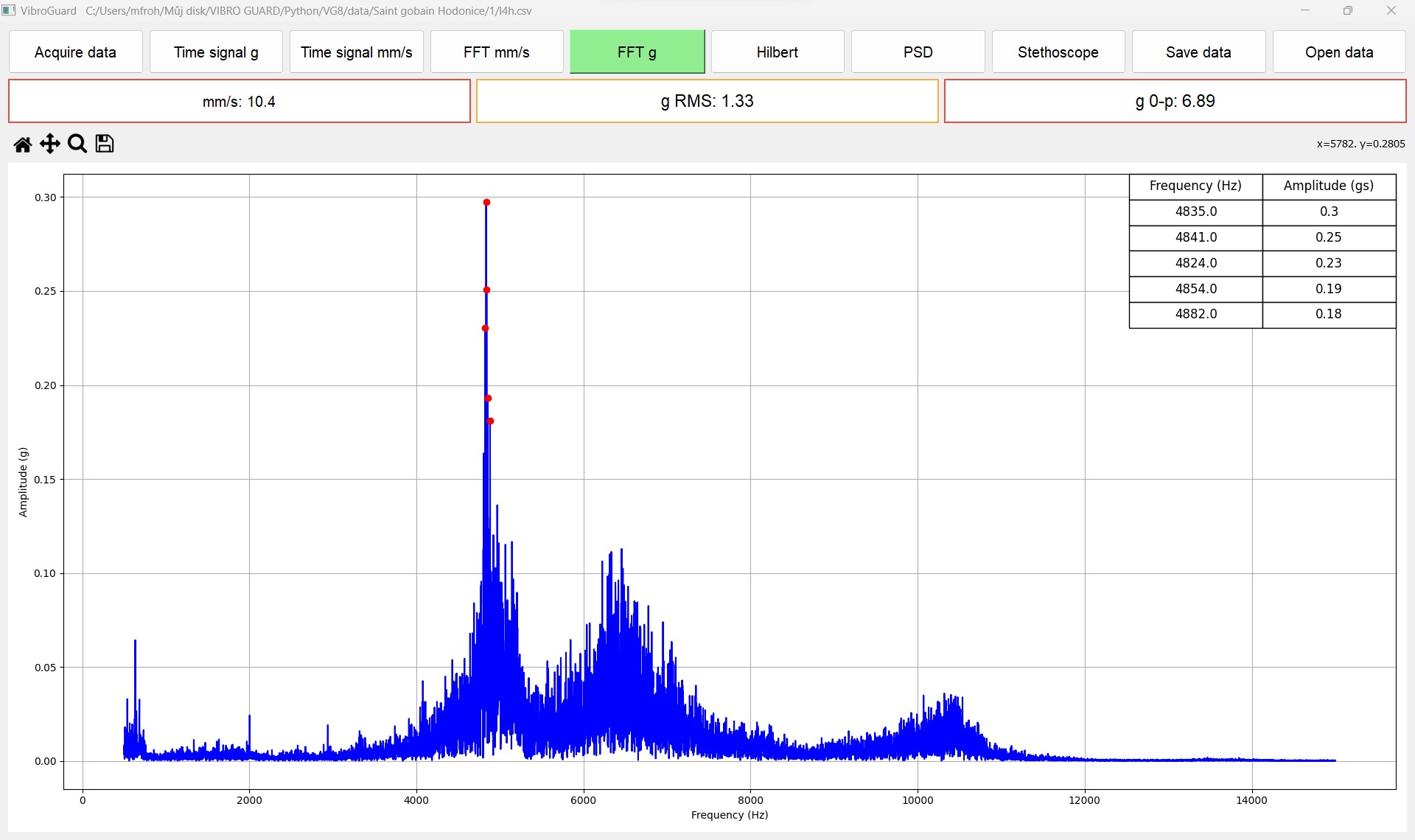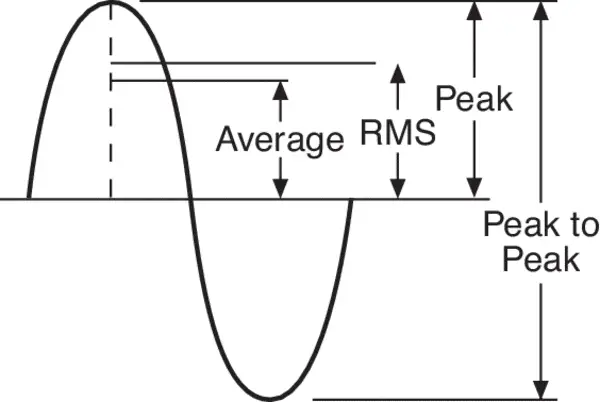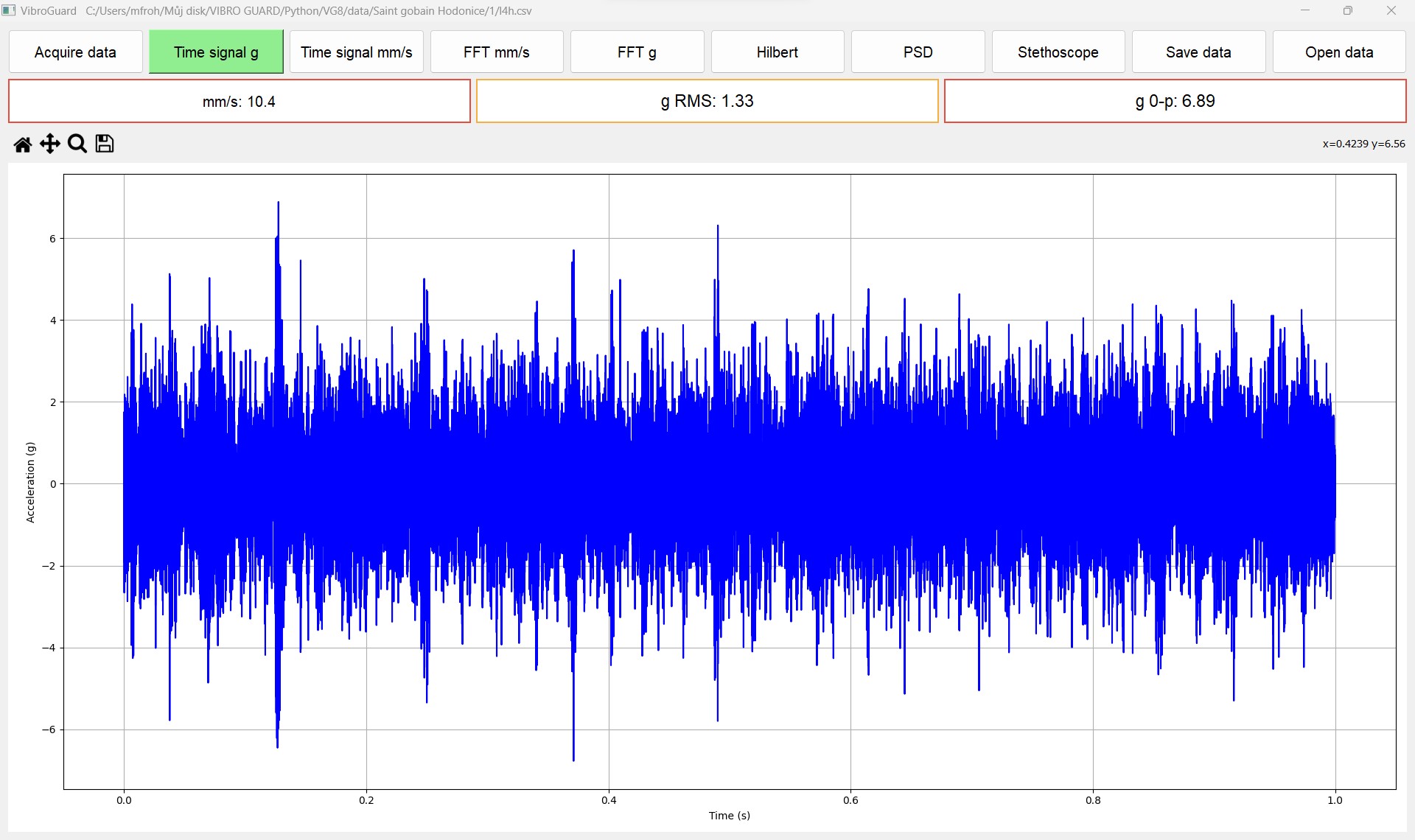Vibrations acceleration
The specific part of the machine we want to monitor is the bearing. Bearings generate vibrations at higher frequencies due to their construction. These vibrations are most commonly measured in units of “g” (or alternatively in m/s^2). The basic measurements are conducted in the range of 500 to 15,000 Hz.
The conversion from g to m/s^2 is, for example, 1g x 9.8 = 9.8 m/s^2. So, if I measure, for instance, 0.5g, it equals 4.9 m/s^2.
The conversion from m/s^2 to g is, for example, 15 m/s^2 / 9.8 = 1.53g.
Below is acceleration FFT spectrum in frequency range 500-15000Hz in g.

The RMS value of vibration is the square root of the average of the squared amplitudes of vibrations within a specific time interval. It is a statistical parameter used to characterize the overall energy content of vibrations and is commonly employed in the analysis of machine and equipment vibrations.
The RMS value of vibrations provides information about the overall intensity of vibrations within a specific time interval. It is a valuable measurement because some sources of vibrations, such as unbalanced rotating machine components, may generate periodic impulses with high amplitudes that could only be detected using frequency spectra. The RMS value also allows for comparing vibration levels between different machines or different points on the same machine.
Using RMS values of vibrations enables efficient monitoring of vibrations and identification of potential machine issues, such as uneven wear or bearing damage. These problems can lead to undesirable machine wear, efficiency loss, and even accidents. Therefore, it is crucial to regularly monitor machine vibrations to identify issues promptly and prevent adverse consequences.
On the image is illustrated what RMS, Average, 0-peak, and peak-peak mean.

Overall gRMS value is 1.33 and peak value is 6.89.
